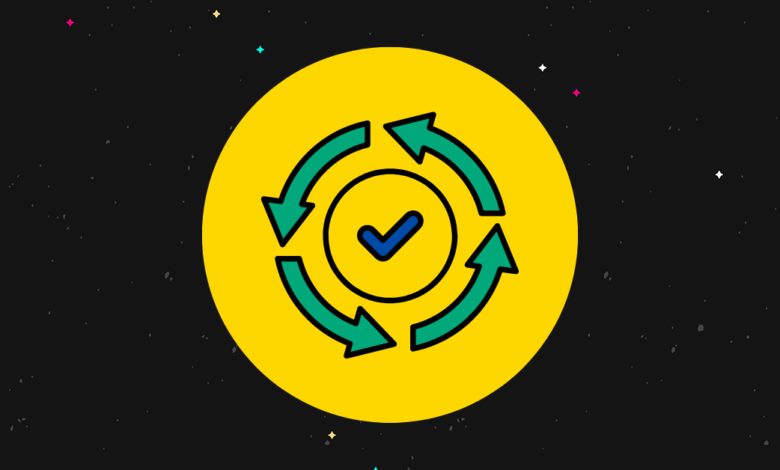
Are you struggling to stay consistent with your blog?
New blogs have to overcome a lot of hardships. One that’s not mentioned nearly enough is just how hard it can be to start blogging when you already have a lot of other responsibilities to worry about.
In this post, we share a few tips you can use to motivate yourself to be more productive with your blog.
Why is it important for you to stay consistent with your blog?
There are three reasons why you should be more consistent with blogging:
- Consistency can impact SEO.
- It helps your audience understand when to expect new content from you.
- Giving yourself deadlines can motivate you to be more productive.
1. Improving SEO with consistency
Let’s talk about the first reason.
Publishing more frequently alone won’t improve your blog’s rankings. Search engine optimization is much more complex than that.
Here’s what Google’s answer was when they were asked whether or not publishing content daily improves rankings:
“No.
Posting daily or at any specific frequency for that matter doesn’t help with ranking better in Google search results.
However, the more pages you have in the Google index, the more your content may show up in search results.”
What this means is that posting daily, every other day, weekly or at any other rate won’t help your rankings. What will is having more pages on your site for Google to crawl and index.
Posting more frequently is simply a means to creating more pages on your site for Google to index.
However, this is where the complexity of SEO comes into play.
You should only publish blog posts that are well written and optimized for SEO and readers alike.
You may be able to whip out short posts on a daily basis, but if they aren’t high quality and they don’t provide value to your audience, you aren’t going to see any benefit from publishing that frequently.
Do this instead: figure out how long it takes you to create a high-quality blog post for your niche, from the time you start researching the post to the time you schedule it for publication and promote it. That’s how often you should publish.
Once you figure this number out, stick to it to gain consistency. We’ll discuss more tips like this later on in this post.
2. Using consistency to grow your audience
As you start earning followers who genuinely look forward to your next piece of content, you also need to start using tactics to keep them engaged between posts.
Consistency is a tactic content creators have used for centuries to keep their audiences engaged, from newspapers printed in the 18th century to YouTube videos uploaded today.
When audiences know when to expect a new piece of content, they’re more likely to consume it. It becomes a part of their weekly routine just as much as it becomes a part of yours.
Once you figure out how long it takes you to complete a blog post well enough for it to be published, choose a consistent blogging schedule.
This could mean choosing specific days of the week to publish on, publishing a post every “X” weeks or choosing specific dates of each month to publish on.
Whatever schedule you choose, make sure your audience knows it, and make sure you stick to it.
For example, retired YouTuber Jenna Marbles ended every video with “we make videos every Wednesday,” casually letting her audience know when to expect her next upload.
3. Stay productive with consistency
The last reason why consistency is important for bloggers is the way it helps you stay productive.
By giving yourself a specific schedule to stick to, you also give yourself deadlines to meet.
This can be enough to make some bloggers more productive because it helps you build a habit. If you miss a deadline, you may be more likely to miss more in the future.
If you miss several deadlines, you may give up on consistency (and maybe even your blog) altogether.
The quicker you work your way toward consistency, the more likely you are to stick with blogging and get things done.
How to define consistency in blogging
Consistency can mean a lot of things, so let’s briefly touch base on how to define what “consistency” should mean for your blog.
In the world of content creation, consistency is the practice of deciding on a publication schedule and sticking with it.
It can also be defined as the simple act of you actually working on your blog on a week to week basis.
But like we said, it’s best if you determine how long it takes you to get a high-quality and highly valuable blog post published and promoted.
That figure will give you an idea of what your publication schedule should look like and define what “consistency” means for you.
You should also make sure you’re integrating days off into your schedule. You may be able to write for five hours or more everyday right now, but what about a month from now or a few months from now?
Burnout is highly common in the world of content creation. The best way to ensure you stay consistent is by choosing a publication schedule that prevents it.
How to be more consistent as a blogger
We’re going to discuss quite a few methods you can use to be more consistent with your blog:
- Choose a niche that means something to you.
- Set goals for your blog.
- Enhance your writing environment.
- Create outlines for your blog posts.
- Determine how long it takes you to complete a blog post.
- Define a publication schedule for your blog.
- Define a schedule for you to follow every week.
- Promote your content to meet audience expectations.
- Create an editorial calendar.
- Utilize accountability.
- Automate your blog.
1. Choose a niche that’s meaningful to you
The best way to ensure you stay consistent with your blog is to ensure you stay interested in it. And the best way to do that is to ensure you stay interested in the overarching topic your blog is about.
The best way to do that is to choose a niche that you have personal interest in.
This is the best way to prevent burnout from blogging, which is the biggest threat to your consistency.
2. Set small goals for your blog
Try to incorporate a tactic video games use to get players to play more.
Whether it’s a random phone game you downloaded or the latest Call of Duty title, video game companies create timed challenges for players to complete in exchange for rewards.
You can incorporate rewards into your own challenges, but the main point is how having small goals in mind can help you stay active long enough to meet them.
Here are some small goals you can create to help you stay productive with your blog:
- Reach X email subscribers
- 100 email subscribers
- 250 email subscribers
- 500 email subscribers
- 1,000 email subscribers, etc.
- Reach X visitors
- Reach 500 visitors
- Reach 1,000 visitors, etc.
- Write X words per day
- Write 500 words per day
- Write 1,000 words per day
- Write 1,500 words per day, etc.
- Write for X days in a row
- Write for two days in a row
- Write for three days in a row, etc.
3. Create a productive writing environment
If you want to stay consistent with your blog, you need to be in an environment that allows you to concentrate on writing.
This is highly personal and differs from person to person.
Some people are most productive when they write in coffee shops or the library. Some people need to be alone and in complete silence. Others need to listen to something on headphones while they write, such as instrumental music or podcasts.
Determine what your perfect writing environment is, and try to make an effort to always write within it.
4. Research and outline your articles
Writing blog posts is difficult. And the more difficult the writing process is, the less likely you are to stick with it.
This is why it’s important for you to research and outline your articles.
It’ll make the writing process go much smoother.
5. Determine how long it takes you to get stuff done
Start tracking how long it takes you to get everything done for your blog post. You can use the stopwatch on your phone or a time tracking app.
You can simply track time from the time you start working on a post to the time you schedule promotional content for it (emails and social media posts).
You can also track each task individually, if you want, such as researching and outlining, writing, editing, creating images, creating social media content, etc.
What you’re doing is determining how long it takes you to create a blog post so you can work blogging tasks into your weekly schedule.
You should do this for different post types. After all, different types of posts take different sets of time to complete.
Determine how long it takes you to write longform guides, list posts and reviews.
6. Determine a publication schedule for your blog
Now that you know how long it takes you to create a blog post, you can make an informed decision on how often you should publish a new post.
Again, be realistic.
You now know how long it takes you to create a blog post from start to finish. What you need to do now is determine how consistently you can complete that time.
Can you publish a post every Wednesday? How about every other Wednesday? Can you publish every Monday and Thursday?
Take your current job and responsibilities into consideration, then use that to determine how often you can realistically publish a blog post.
7. Create a schedule to follow every week
Now that you know approximately how long it takes for you to complete a blog post, you’ll have a much easier time working one into your schedule.
Start by making a simple list of all of the tasks involved in creating a post for your blog. This means researching, outlining, writing, editing and more.
Then, add these tasks to your weekly to-do list so they’re all completed within the timeframe of the publication schedule you chose.
Manage your to-do list with a tool if you don’t already. This could be an app, a journal or a simple piece of paper you fill out everyday.
You should put your blogging to-do list on a piece of paper, anyway, and place it on your workspace or some place where you’ll see it often.
This will act as a constant reminder to motivate you.
8. Promote your content
Every time you publish a blog post, promote it through your email list and on social media.
For social media, create original content that represents your blog post instead of promoting a simple link post.
For example, if your blog post covers 5 different points, you could turn it into 5 different short videos to publish on YouTube, TikTok, Facebook, and Instagram, etc.
This is a great option particularly if you don’t have much other content going out on your social accounts.
If you know your audience knows when to expect a new post from you, you may be less likely to miss deadlines.
Note: If you need more help, check out our article on how to promote your blog.
9. Define your content strategy and create an editorial calendar
One thing that threatens a blogger’s consistency is not knowing what to blog about. A content strategy combined with an editorial calendar fixes that.
Develop a strategy for your content by coming up with goals for your business and determining what content you need to create to meet those goals.
Then, perform keyword, competitive and audience research to come up with enough content ideas to fill out an editorial calendar for at least a few months.
Make sure you schedule different types of posts into your calendar. The variety will help you stay consistent.
10. Engage in accountability
Accountability is a great motivator. If you have to prove you’re getting work done, you’re more likely to actually get it done.
You can hold yourself accountable with a business journal.
There are also online communities all across the web that will allow you to share your blogging progress.
11. Outsource and use automated tools
If you’re truly struggling to stay consistent with your blog and you have a bit of extra cash you can spend on your business, consider outsourcing a few tasks.
You can outsource entire articles or even just the research portion of those articles.
You can also use automated tools in almost every step of the content creation process from tools that publish social media posts automatically to AI tools that generate outlines for you.
Final thoughts
Publishing content consistently can impact your SEO, help your audience know when to expect new content, and motivate you to be more productive.
And the tips above will help you do all of this.
But, the most important part of this is to be realistic with what you can achieve with the time you have available.
A little pressure can motivate you and help you be more productive, sure, but too much pressure can have the opposite effect. The key is to find balance between the two.




